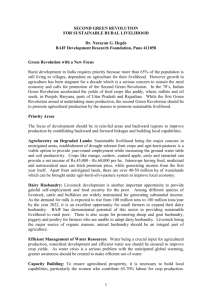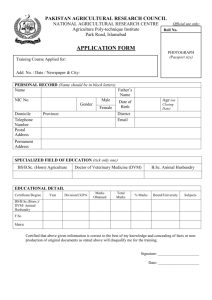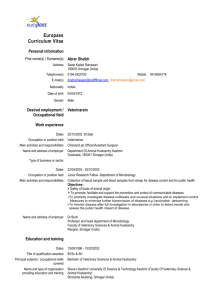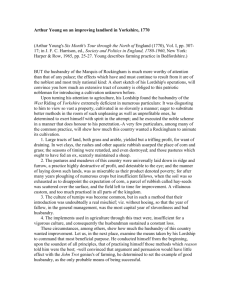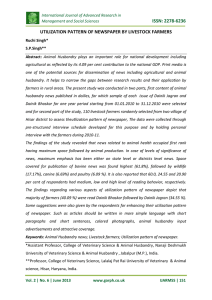Proposed changes, if any in the course contents and credit hours of
advertisement
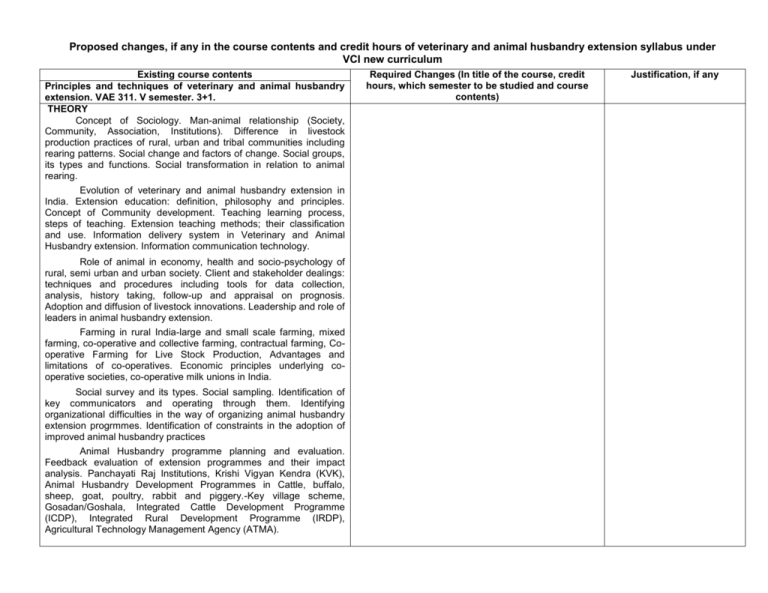
Proposed changes, if any in the course contents and credit hours of veterinary and animal husbandry extension syllabus under VCI new curriculum Existing course contents Principles and techniques of veterinary and animal husbandry extension. VAE 311. V semester. 3+1. THEORY Concept of Sociology. Man-animal relationship (Society, Community, Association, Institutions). Difference in livestock production practices of rural, urban and tribal communities including rearing patterns. Social change and factors of change. Social groups, its types and functions. Social transformation in relation to animal rearing. Evolution of veterinary and animal husbandry extension in India. Extension education: definition, philosophy and principles. Concept of Community development. Teaching learning process, steps of teaching. Extension teaching methods; their classification and use. Information delivery system in Veterinary and Animal Husbandry extension. Information communication technology. Role of animal in economy, health and socio-psychology of rural, semi urban and urban society. Client and stakeholder dealings: techniques and procedures including tools for data collection, analysis, history taking, follow-up and appraisal on prognosis. Adoption and diffusion of livestock innovations. Leadership and role of leaders in animal husbandry extension. Farming in rural India-large and small scale farming, mixed farming, co-operative and collective farming, contractual farming, Cooperative Farming for Live Stock Production, Advantages and limitations of co-operatives. Economic principles underlying cooperative societies, co-operative milk unions in India. Social survey and its types. Social sampling. Identification of key communicators and operating through them. Identifying organizational difficulties in the way of organizing animal husbandry extension progrmmes. Identification of constraints in the adoption of improved animal husbandry practices Animal Husbandry programme planning and evaluation. Feedback evaluation of extension programmes and their impact analysis. Panchayati Raj Institutions, Krishi Vigyan Kendra (KVK), Animal Husbandry Development Programmes in Cattle, buffalo, sheep, goat, poultry, rabbit and piggery.-Key village scheme, Gosadan/Goshala, Integrated Cattle Development Programme (ICDP), Integrated Rural Development Programme (IRDP), Agricultural Technology Management Agency (ATMA). Required Changes (In title of the course, credit hours, which semester to be studied and course contents) Justification, if any Gender considerations in Veterinary practice. Changing expectations from new recruits to the profession and employers of veterinarians. Growing changes in corporate, client influence and changes in work ethics. Information communication technologies. Virtual class room and self learing. E-learning. Information kiosks. Agriculture portals. Ecommerce-scope and local application. Computer aided teaching/learning, web-sites dedicated to veterinary and animal sciences education, web directories and virtual learning institutions (e-institutions). PRACTICAL Audio-visual equipments. Principles and use of overhead. Slide and multimedia projectors, digital video/still camera. Preparation and use of visual aids like posters, charts, flash cards, flipcharts, etc. Use of literature and media in Extension. Identification of key communicators and operation programme. Enumeration of organizational difficulties in animal husbandry extension programmes. Identification of constraints in the adoption of improved animal husbandry practices. Constraint analysis. Group discussions, techniques and procedures for awareness campaigns on different veterinary and animal husbandry practicessigns of diseases, preservation of eggs, clean milk production, controlling of ectoparasites, pail feeding of calves, sexing and culling of birds, first aid for minor wounds, disinfection of byres, branding, use of horn cauterization, timely A.I., choice of good progeny, care in pregnancy, infertility, environmental hygiene, preparation of feeds and feeding schedules, deworming, preventive hygiene, vaccination etc. Organization of animal welfare camps, exhibition, livestock shows etc. Hands on training in the use of computers for teaching and information dissemination. Rapid Rural Appraisal/Participatory Rural Appraisal in identifying livestock production/health care practices.

